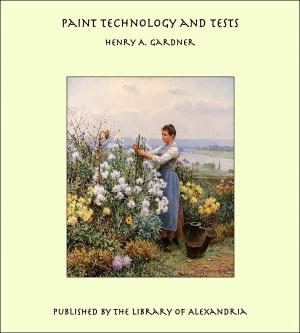| Author: | W. H. Hudson | ISBN: | 9781465506252 |
| Publisher: | Library of Alexandria | Publication: | March 8, 2015 |
| Imprint: | Language: | English |
| Author: | W. H. Hudson |
| ISBN: | 9781465506252 |
| Publisher: | Library of Alexandria |
| Publication: | March 8, 2015 |
| Imprint: | |
| Language: | English |
BIRDS AT THEIR BEST By Way of Introduction Years ago, in a chapter concerning eyes in a book of Patagonian memories, I spoke of the unpleasant sensations produced in me by the sight of stuffed birds. Not bird skins in the drawers of a cabinet, it will be understood, these being indispensable to the ornithologist, and very useful to the larger class of persons who without being ornithologists yet take an intelligent interest in birds. The unpleasantness was at the sight of skins stuffed with wool and set up on their legs in imitation of the living bird, sometimes (oh, mockery!) in their "natural surroundings." These "surroundings" are as a rule constructed or composed of a few handfuls of earth to form the floor of the glass case—sand, rock, clay, chalk, or gravel; whatever the material may be it invariably has, like all "matter out of place," a grimy and depressing appearance. On the floor are planted grasses, sedges, and miniature bushes, made of tin or zinc and then dipped in a bucket of green paint. In the chapter referred to it was said, "When the eye closes in death, the bird, except to the naturalist, becomes a mere bundle of dead feathers; crystal globes may be put into the empty sockets, and a bold life-imitating attitude given to the stuffed specimen, but the vitreous orbs shoot forth no life-like glances: the 'passion and the life whose fountains are within' have vanished, and the best work of the taxidermist, who has given a life to his bastard art, produces in the mind only sensations of irritation and disgust." That, in the last clause, was wrongly writ. It should have been my mind, and the minds of those who, knowing living birds intimately as I do, have the same feeling about them. This, then, being my feeling about stuffed birds, set up in their "natural surroundings," I very naturally avoid the places where they are exhibited. At Brighton, for instance, on many occasions when I have visited and stayed in that town, there was no inclination to see the Booth Collection, which is supposed to be an ideal collection of British birds; and we know it was the life-work of a zealous ornithologist who was also a wealthy man, and who spared no pains to make it perfect of its kind. About eighteen months ago I passed a night in the house of a friend close to the Dyke Road, and next morning, having a couple of hours to get rid of, I strolled into the museum. It was painfully disappointing, for though no actual pleasure had been expected, the distress experienced was more than I had bargained for. It happened that a short time before, I had been watching the living Dartford warbler, at a time when the sight of this small elusive creature is loveliest, for not only was the bird in his brightest feathers, but his surroundings were then most perfect—The whin was frankincense and flame. His appearance, as I saw him then and on many Other occasions in the furze-flowering season, is fully described in a chapter in this book; but on this particular occasion while watching my bird I saw it in a new and unexpected aspect, and in my surprise and delight I exclaimed mentally, "Now I have seen the furze wren at his very best!" It was perhaps a very rare thing—one of those effects of light on plumage which we are accustomed to see in birds that have glossed metallic feathers, and, more rarely, in Other kinds. Thus the turtle-dove when flying from the spectator with a strong sunlight on its upper plumage, sometimes at a distance of two to three hundred yards, appears of a shining whiteness
BIRDS AT THEIR BEST By Way of Introduction Years ago, in a chapter concerning eyes in a book of Patagonian memories, I spoke of the unpleasant sensations produced in me by the sight of stuffed birds. Not bird skins in the drawers of a cabinet, it will be understood, these being indispensable to the ornithologist, and very useful to the larger class of persons who without being ornithologists yet take an intelligent interest in birds. The unpleasantness was at the sight of skins stuffed with wool and set up on their legs in imitation of the living bird, sometimes (oh, mockery!) in their "natural surroundings." These "surroundings" are as a rule constructed or composed of a few handfuls of earth to form the floor of the glass case—sand, rock, clay, chalk, or gravel; whatever the material may be it invariably has, like all "matter out of place," a grimy and depressing appearance. On the floor are planted grasses, sedges, and miniature bushes, made of tin or zinc and then dipped in a bucket of green paint. In the chapter referred to it was said, "When the eye closes in death, the bird, except to the naturalist, becomes a mere bundle of dead feathers; crystal globes may be put into the empty sockets, and a bold life-imitating attitude given to the stuffed specimen, but the vitreous orbs shoot forth no life-like glances: the 'passion and the life whose fountains are within' have vanished, and the best work of the taxidermist, who has given a life to his bastard art, produces in the mind only sensations of irritation and disgust." That, in the last clause, was wrongly writ. It should have been my mind, and the minds of those who, knowing living birds intimately as I do, have the same feeling about them. This, then, being my feeling about stuffed birds, set up in their "natural surroundings," I very naturally avoid the places where they are exhibited. At Brighton, for instance, on many occasions when I have visited and stayed in that town, there was no inclination to see the Booth Collection, which is supposed to be an ideal collection of British birds; and we know it was the life-work of a zealous ornithologist who was also a wealthy man, and who spared no pains to make it perfect of its kind. About eighteen months ago I passed a night in the house of a friend close to the Dyke Road, and next morning, having a couple of hours to get rid of, I strolled into the museum. It was painfully disappointing, for though no actual pleasure had been expected, the distress experienced was more than I had bargained for. It happened that a short time before, I had been watching the living Dartford warbler, at a time when the sight of this small elusive creature is loveliest, for not only was the bird in his brightest feathers, but his surroundings were then most perfect—The whin was frankincense and flame. His appearance, as I saw him then and on many Other occasions in the furze-flowering season, is fully described in a chapter in this book; but on this particular occasion while watching my bird I saw it in a new and unexpected aspect, and in my surprise and delight I exclaimed mentally, "Now I have seen the furze wren at his very best!" It was perhaps a very rare thing—one of those effects of light on plumage which we are accustomed to see in birds that have glossed metallic feathers, and, more rarely, in Other kinds. Thus the turtle-dove when flying from the spectator with a strong sunlight on its upper plumage, sometimes at a distance of two to three hundred yards, appears of a shining whiteness















